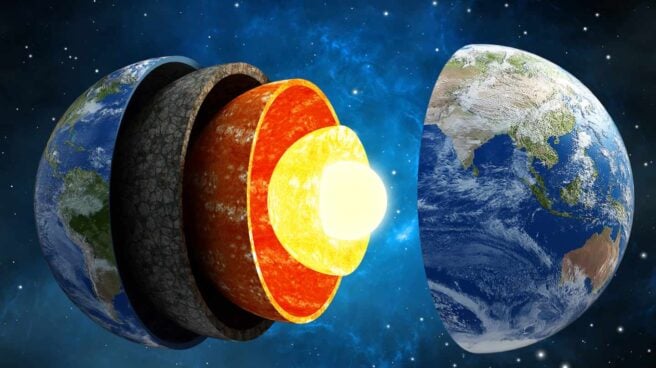

Geological scheme of the Earth’s interior
Rotation of the solid inner core Earth according to a study published in natural science and based on a study of earthquake data recorded on the Earth since the 1960s. The study suggests that changes in rotation can occur on a decadal scale and may help our understanding of how processes deep inside the Earth affect its surface.
Yi Yang and Xiaodong Song analyzed the difference in waveform and travel time of seismic waves from nearly identical earthquakes that have traveled through the Earth’s inner core on similar paths since the 1960s. have changed, suggesting that the rotation of the inner core has stopped.
Song has spent years studying the earth’s core, using technology that collects data not on the initial shocks of an earthquake, but on the waves that resonate after an earthquake. An earthquake is like a hammer hitting a bell; so in the same way that a clear tone is heard that resonates after a bell is struck, seismic sensors pick up a signal consistent with the earthquake code.

“This globally consistent pattern suggests that the rotation of the inner core has recently stopped,” the authors state in the study. “We compared this recent picture with Alaska seismic records from South Sandwich Islands dates back to 1964 and appears to be associated with fluctuations of about seven decades, with another turning point in the early 1970s,” they add.
The authors point out that this change correlates with changes in geophysical observations on the Earth’s surface, such as the magnetic field and the length of the day, which will take years to shorten by a few fractions of a second.
The Earth’s inner core is separated from the rest of the solid Earth by a liquid outer core, which allows it to spin differently from the rotation of the Earth itself. The rotation of the inner core is controlled by a magnetic field generated in the outer core and balanced by the gravitational effects of the mantle. Knowing how the inner core rotates can provide insight into how these layers interact.
Source: El Independiente